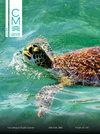委内瑞拉海洋沉积物中的重金属:浓度、污染程度和分布
IF 0.7
4区 生物学
Q4 MARINE & FRESHWATER BIOLOGY
引用次数: 3
摘要
委内瑞拉的石油勘探和开采活动自18世纪以来一直在进行。由于有毒污染物的输入不断增加,这些长期活动与重金属污染密切相关。除其他外,重金属浓度的变化可引起金属分布格局的变化、生物地球化学循环的改变以及环境和生物风险的增加。对委内瑞拉沿岸重金属浓度的完整基线的需要至关重要。因此,我们提出了委内瑞拉沿海海洋沉积物中9种重金属(钡、汞、铜、镍、铬、镉、锌、铅和钒)的浓度、分布和污染程度。我们使用富集系数、地质累积指数和平均影响范围中位数商来评价污染程度,并比较了有干预和没有干预的地区。我们的研究结果表明,这些重金属浓度较高的地方与人类活动较大的地方有关,特别是在委内瑞拉的中部和东部海岸。只有镉表现出极严重的富集和高度污染。生物危害潜力在12%到30%之间,主要与石油活动高的地方有关,这表明,鉴于这些地方所代表的潜在危害,必须对这些地方进行监测。这项工作包括委内瑞拉沿岸9种重金属的分布和浓度,并将相关性作为委内瑞拉和加勒比地区海洋沉积物中重金属浓度和污染指标的基线。本文章由计算机程序翻译,如有差异,请以英文原文为准。
Heavy metals in Venezuelan marine sediments: concentrations, degree of contamination, and distribution
Venezuelan oil exploration and exploitation activities have been taking place since the 18th century. These long-term activities are closely related to heavy metal contamination because of the increasing input of toxic pollutants. Variations in heavy metal concentrations can cause, among other things, changes in metal distribution patterns, alterations in biogeochemical cycles, and increments in environmental and biological risks. The need for a complete baseline on heavy metal concentrations along the Venezuelan coast is critical. For this reason, we present the concentrations, distribution, and degree of contamination of 9 heavy metals (barium, mercury, copper, nickel, chromium, cadmium, zinc, lead, and vanadium) in marine sediments along the Venezuelan coast. We used the enrichment factor, the geoaccumulation index, and the mean effects range median quotients to evaluate the degree of contamination, comparing areas with and without intervention. Our results indicate that higher concentrations of these heavy metals are associated with places with greater anthropic activity, especially on the central and eastern coasts of Venezuela. Only cadmium showed extremely severe enrichment and a high degree of contamination. The biohazard potential was between 12% and 30% and was primarily associated with locations having high oil activity, which suggests that these places must be monitored, given the potential hazard they represent. This work encompasses the distribution and concentration of 9 heavy metals along the Venezuelan coast and takes relevance as a baseline for heavy metal concentrations and pollution indicators in marine sediments for Venezuela and the Caribbean.
求助全文
通过发布文献求助,成功后即可免费获取论文全文。
去求助
来源期刊

Ciencias Marinas
生物-海洋与淡水生物学
CiteScore
1.10
自引率
0.00%
发文量
9
审稿时长
>12 weeks
期刊介绍:
A bilingual open-access publication, Ciencias Marinas (CM) is an international peer-reviewed journal that contains original research findings in all areas of marine science. It is published quarterly by the Autonomous University of Baja California, Mexico, and all its contents are publicly available on our journal website. Though a limited number of copies are still printed, the journal is mainly distributed in its electronic format.
CM was conceived in 1973 as part of an academic project aimed to entice local researchers to publicly disclose their findings by adopting the culture of peer-review publishing. This academic project evolved into an international journal after accepting papers from researchers in the United States and, eventually, other parts of the world. Because of the diversity in authorship, CM issues were initially published in either Spanish or English, and occasionally in both languages. It was not until 1984 when CM included both language versions of all its contents, and it then became the fully bilingual journal it still is today. At CM we believe our inclusive format allows us not only to address a wider range of submissions from international authors but also to make published findings available to a wider international audience.
So whether you are looking for information on the redfish in Icelandic waters or the physical and biological properties of the Gulf of California, feel free to peruse CM contents. You may find them to provide source material for your research.
 求助内容:
求助内容: 应助结果提醒方式:
应助结果提醒方式:


